Medicine for the brain
Download the full periodic table of juicing here >
In this new blog, we dive into my favorite topic, brain health. As a board-certified neurologist for adults and children, I have seen thousands of patients struggling with symptoms that affect the quality of life, including headaches, fatigue, pain, cognitive difficulties, insomnia, anxiety, and more. After my residency, I earned my Ph.D. in Environmental Toxicology (focused on pharmaceutical residues in our drinking water), and then I completed a fellowship in Integrative Medicine. These two degrees, along with my medical degree, taught me that many suffer from daily exposures to toxic substances over decades of life.
Five years after my fellowship, I opened my own practice to combine the best of Western and integrative medicine, something for which I hold a great passion. It has been a rewarding experience to see patients thrive and improve brain health when focusing on lifestyle changes. This integrative approach, plus a broader acceptance of food as medicine and plant-based diets, make me optimistic about lifestyle changes and brain health.
I found that Western medicine is important in most cases, but the healing exceeds my expectations when patients include some or all of what I share below. I know this personally as I had surgery to remove a brain tumor in 2016 and a year later had radiation prescribed when there was a recurrence. The recipes below are personal as I used them in recovery and now, every day.
So let’s dive in. I invite you to read, learn, and post your questions in the comment box so we can continue this essential and hopeful conversation.
In this edition, the Periodic Table of Juicing focuses on brain health:
- How can juice help create a healthy brain?
- Juice recipes for brain health
- How does food play a role in creating a healthy brain?
- What does a healthy brain look like?
- What is happening with the average brain in today’s world?
- What are some of the common ailments that result from an imbalanced brain?
- What are typical treatments for these ailments?
- Dementia and the direct impact of food
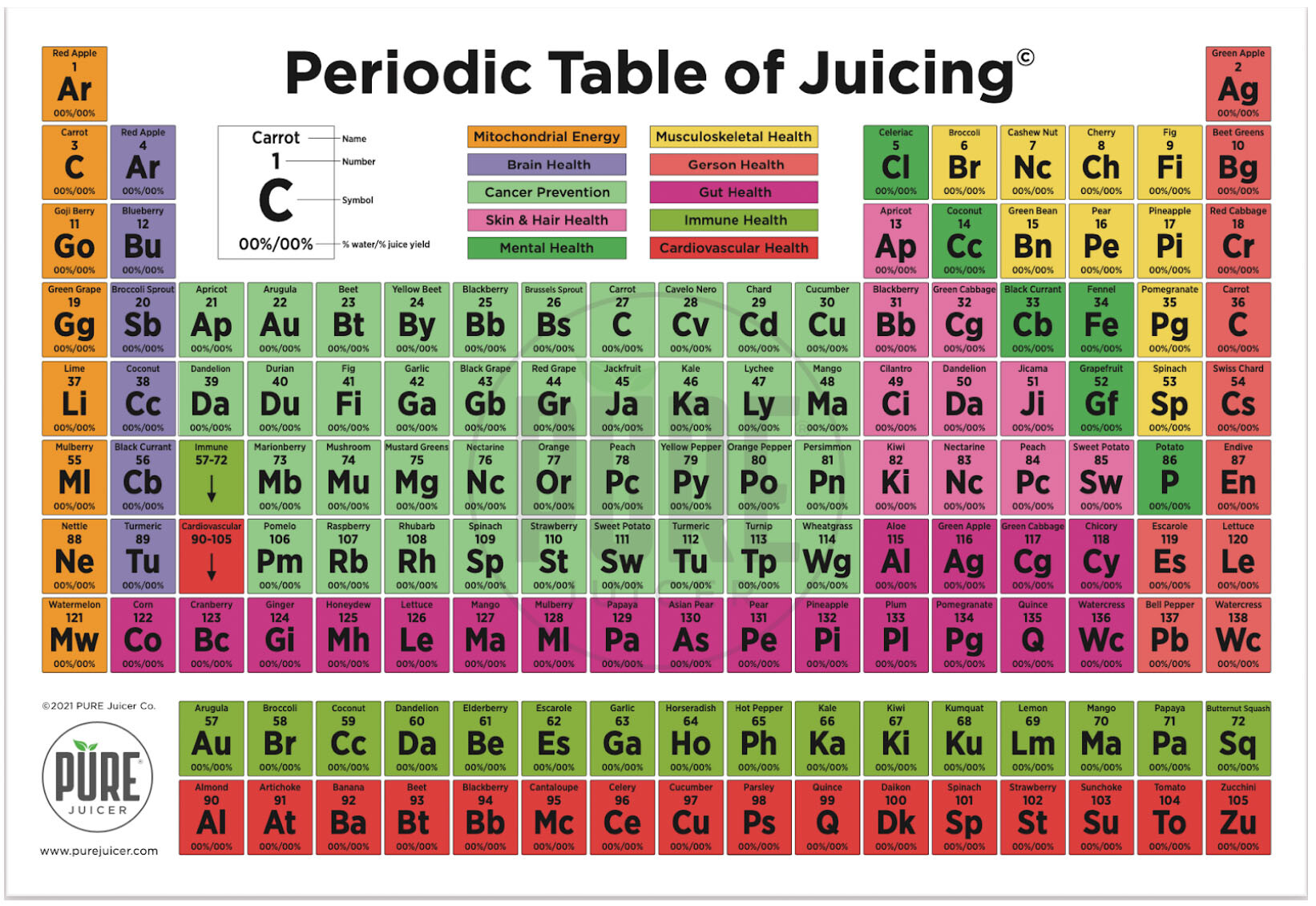
Download the full periodic table of juicing here >
First, we begin with the Periodic Table of Juicing. You can use the table as food and juice reference as you go through the blog. The table is color coated by primary health benefits, like green for cancer prevention and red for cardiovascular health. It also uses abbreviations like AP for Apricot in the cancer prevention category andPi for Pineapple in the musculoskeletal category. Please note that other fruits and vegetables offer secondary support to the brain and other body systems.
How Can Juice Help Create a Healthy Brain?
Juicing is phenomenal for a healthy brain and, as I note below, for healing the brain.
Cold press juicing fills us with nutrients that most of us don’t often get enough of due to the time it takes to prepare and eat large amounts of fresh raw produce. Every quart of juice we drink is the equivalent of three pounds of fresh produce. Fresh juice is absorbed by our digestive system and gut in approximately 15 minutes and as a result, is easy on our gut and circulatory system. When we juice our body’s energy is spent on healing and rejuvenation instead of digestion. I used these recipes while recovering from brain surgery and brain radiation.
Recipes For Brain Health
1. Phyto Fit
Broccoli (1.5 cups)
Apples (8 medium)
Garlic (1 clove)
Yield: (32 oz of juice)
2. Sweet Strength
Red Grapes (4 cups)
Packed Spinach (1.5 cups)
Brussels sprouts (1 cup)
Yield: 24 oz of juice
3. Orange I Right?
Carrots (4 medium),
Acorn squash (¼)
Pineapple (1)
Yield 40 oz of juice
4. Sugar Snapped
Green peas (1 lb or 5 cups)
Turmeric (1-3” thumb )
Lemon (½)
Yield: 20 oz of juice
5. Summer Light
Blueberries (½ pint)
Peaches (10 medium)
Chard ( 2 cups packed )
Yield: 20 oz of juice (This can be excellent as a smoothie bowl from frozen berries and peaches, drizzling the green juice over the top.)
6. MCT Kiss
Coconut milk ( 32 oz )
Raspberries ( 6 oz or 1 pint )
Black currants ( 1/2 cup )
Yield: 36 oz of juice

Sweet Strength

Sugar Snapped
I love all these fruits and vegetables for the brain. They all have compounds important for neuronal and glial (cells that support the nervous system) health. To extract the compounds through juicing is like medicine for the brain. They can certainly be mixed and matched or added to other preferred juices. I have played around with these combos over the years and find these the tastiest!!!
The information about food and nutrients I write about below applies both to juicing and the consumption of fruits, vegetables, and grains. As I ‘preach’ regularly to my clients, juicing complements a healthy diet rich in fiber. So I hope you can use the food and juice sections to inspire your next shopping trip for juice and meal ingredients.
How Does Food Play a Role in Helping Create a Healthy Brain?
Food is critical. An anti-inflammatory diet of fruits and vegetables directly contributes to the healthy functioning of the brain and helps modify other risk factors to the entire body such as obesity, cardiovascular disease, and diabetes. These ailments contribute to systemic and neural inflammation and also play a role in brain disorders. I dive into inflammation more in the gut health blog.
Dietary recommendations can be controversial and confusing for patients as the internet is full of conflicting and contradictory advice to prevent cognitive decline and dementia. A whole-foods diet void of processed and sugary foods has overwhelming support from many schools of thought. There is also an agreement that nutrition plays a vital role in preventing dementia. Studies support that a diet rich in phytonutrients such as flavonoids, tocopherols, tocotrienols, and polyphenolic compounds to positively impact brain health. Phytonutrients (plant nutrients) are found in various fruits and vegetables, legumes, nuts, seeds, healthy fats, and whole grains.
Specific plant nutrients have the benefit of robust research to support their critical role in brain health. Resveratrol, an important polyphenol found in grapes and blueberries (as well as chocolate!), is a natural antioxidant, anti-tumor, and overall neuroprotector. Its ability to increase antioxidant defense may minimize the progression of dementia.

Phyto Fit

Summer Light
Phenolic compounds are found in various brightly colored fruits and vegetables, and roots, and grains. Nutritional phenolic compounds are highly bioavailable. They act as antioxidants, antibacterials and are antimutagenic. They inhibit the oxidation of fatty acids, making them more accessible for energy production (great for our mitochondria). Examples are cocoa, potato, yam, tomato, kale, Brussels sprouts, broccoli, and other dark leafy greens. Read more about phenolic compounds in Science Direct.
The flavonoid group, catechins, found in green tea, have been shown to enhance cognition and provide neuroprotection. Indeed, there is data to suggest regular green tea consumption has a more significant effect than antioxidant supplementation of Vitamins C and E. Other sources of these important catechins include the various berries, apples, pears, peaches, and pomegranates. Berries also contain anthocyanins (a water-soluble pigment), hence why many have dark blue and purple colors. Berries and black currants are excellent sources of anthocyanins as they help protect the brain from free-radical damage and reduce the risk of neurodegeneration.
Bioactive phytochemicals (known as phytonutrients – or plant nutrients) could represent a natural alternative to ensure healthy function and slowed aging process of neuronal cells.
Whole grains are essential as the brain prefers the glucose molecule as its primary energy source. Our biochemistry prefers complex carbohydrates to break down to glucose. The metabolic process is highly regulated and important for glucose delivery and utilization. Processed foods use sugar and oxidized forms of fat that we perceive as tasty so we crave these foods. These ingredients alter the way we think foods should taste and can affect the addictive regions of our brains. It does not provide the body energy at all, much less in the natural form the body truly needs. Please note, grains are not included in the Periodic Table of Juicing.

Phyto Fit
There are certain levels of complexity when it comes to carbohydrates. Millet and amaranth are very complex. Steel oats, especially the ones you soak overnight, are the best oats to eat. There are many processed types of oatmeals. Oat milk is processed to an extent but is a good substitute for dairy. Really simple sugar is something like a doughnut. Our biochemistry includes very eloquent molecular reactions to break down whole grains and deliver the glucose to the brain. So the body does not need glucose in its simple or processed forms.
In addition, healthy fats can be another source of defense. Healthy fat content in foods such as coconut and avocado is important. Coconut oil is high in medium-chain triglycerides (MCTs). When MCTs are metabolized, they help produce ketones that can be used as an alternative energy source for the brain, which can at times help an overburdened brain put up a more resilient defense. Please note that ketones are a source of energy utilized by the brain when under stress and when we have used up glycogen stores. Recommending healthy fats to produce ketones is not to be confused with the keto diet, forcing the brain to use ketones under conditions it would not usually choose to do.
Garlic (Allium sativum) contains important extracts that have powerful antioxidant activity and have been shown to reduce the neurotoxicity of free radicals and have anti-hypertensive (anti-inflammation) properties. These extracts are important because they directly affect lowering neuroinflammation. These extracts also have an indirect effect of modulating an important risk factor of elevated blood pressure. Both can lead to poor oxygenation of neuronal and non-neuronal cells as well as vasculopathy (any blood disease).
B vitamins are essential cofactors for the metabolism of numerous neurotransmitters and other vital compounds such as the amino acid homocysteine. Elevated homocysteine is connected to an increased risk of stroke, neuroinflammation, cognitive decline, and lower immunity. Vitamin B12 deficiency has known cognitive effects and has been shown to turn on the PSEN1 gene, which encodes the protein presenilin one, which increases the likelihood of Alzheimer’s when mutated. Having the gene is one thing, but turning it on can be another. B vitamins such as B12, B6, and folate can reduce homocysteine, and while we can take supplements (pills), supplementation with capsules and tablets is much less bioavailable than the vitamin from foods. Dark leafy greens such as chard and kale are food sources of these essential vitamins.

Orange I Right?
And finally, a plug for my morning coffee. There has been quite a bit of research regarding the health benefits of caffeine. Caffeine is a xanthine alkaloid that scavenges hydroxyl radicals (these are highly reactive and attack organic material and cause oxidative stress). It also may decrease amyloid-b (an amino acid) production, mitigating the progression of dementia pathologies.
Now let’s focus on the world of neurology and dementia.
What does a healthy brain look like?
When we have a healthy, nourished, and functioning brain, we have mental clarity that allows us energy throughout the day to focus, comprehend, recall, learn, make decisions, and interact with our environment. A healthy brain also allows for an appropriate emotional response to sad, funny, angering, or traumatic things. Finally, a healthy and functioning brain not only regulates our circadian systems with hunger and satiety signals so that our appetite serves to provide energy to the body when needed but also sleep/wake signals to allow for restorative sleep and energy during waking hours.
Restorative sleep is crucial when our glymphatic system – the brain’s lymphatic system – is most efficient in draining cellular debris and metabolic waste by-products. Indeed, more glymphatic function to remove waste in the nervous system has been thought to be associated with post-concussion syndrome, chronic fatigue syndrome, and chronic traumatic encephalopathy.
The brain communicates to the whole body using neurons and glial cells (or non-neuronal cells in the central nervous system) via the exchange of neurotransmitters, including acetylcholine, GABA, glutamate, dopamine, serotonin, and epinephrine.

Orange I Right?
The brain also participates in ‘talking’ with other cells of the body to ensure the proper functioning of our organs. This is done partly by the neuroendocrine axis, which starts with the hypothalamus of the brain and proceeds down the axis of the pituitary, thyroid, ovaries/testes, and adrenals. Other important glands that receive messages include parathyroid glands and the pancreas.
There is also an interplay between the central nervous system (the brain and spinal cord) and the peripheral and autonomic nervous systems, as well as the immune system all the way down to the level of immune cell production machinery of the bone marrow. This is such an incredibly intricate cross-network, and interlinking of the different systems and the brain serves as its all-important fulcrum for homeostasis, which is where our bodies need to be to harness our innate healing powers.
Neurotransmitters require enzymes to work correctly. So let us remember that a healthy brain is nourished by fruits, vegetables, roots, and grains rich in enzymes, vitamins, minerals, phytonutrients, and more especially available via cold press juicing.
What is happening with the average brain in today’s world?

Sweet Strength
The average brain today is fraught with challenges. Average individuals manage and navigate the stress of a life of work, family, local concerns, global scares, and more. These stresses often lead to poor sleep, poor diet, lack of movement and exercise, scarcity of meditation and introspection, little social interaction, and, frankly, loss of joy.
We struggle with our past, worry about our present, and become anxious about our future. We reach for fast and convenient foods that do not nourish our bodies and only worsen our body’s struggle to keep up with demands for homeostasis. We develop disease and are prescribed a multitude of medications. We self-medicate with alcohol, drugs, and sugar. We become one big ball of neuroinflammation that further leads us unable to make better choices.
What are some of the common ailments that result from an imbalanced brain?
An unhealthy brain can result in cognitive decline, dementia, abnormal movements, stroke, headaches, ataxia, gait dysfunction, and more. Hence our brain is not healthy. We don’t sleep as well, don’t think as well, have little energy, have difficulty focusing and completing tasks, and feel somatic symptoms such as nausea and pain and altered gut function (which plays a contributing role – see the previous blog).
What are typical treatments for brain ailments?
The reality is there are a lot of diagnoses in neurology but not a lot of treatments. This is why lifestyle and the foods and juices I recommend above give me hope for my patients and myself. Neurodegenerative disorders have some palliative and symptomatic treatment options, but there are few curative options. We can work to minimize and slow progression certainly, and I have many patients with a diagnosis of, for example, Alzheimer’s disease (AD), Parkinson’s Disease, mild cognitive decline, or who have had strokes. Food plays a significant role, and we need to be sure we are eating in alignment with our brain needs and not against it.
Dementia and The Direct Impact of Food
One of our greatest worries for the future is dementia. I am asked to write about it regularly, and I see patients each week who fear they are losing their ability to focus, concentrate, remember. They tell stories of trying to remember why they entered a room. Stories of not being able to complete tasks, comprehend a paragraph in a book or recall a recent conversation. They share their experiences of watching a parent suffer from the throes of dementia such as Alzheimer’s disease (AD) or another dementia syndrome.
Dementia is considered a constellation of memory impairment, cognitive dysfunction, and loss of emotional and executive abilities. It currently affects millions of Americans and tens of millions of individuals worldwide. Dementia due to AD is the most common form of dementia. An estimated 5.7 million Americans suffer from AD dementia (AD). The incidence and prevalence of AD increase with age, and it has been estimated that by the year 2050, the number of people with AD will triple, the majority of will be over 80 years of age, and this will significantly increase the impact on not only those that suffer from AD but their family, friends, and caregivers. The core of AD is memory impairment with impairment in at least one other cognitive ability, such as aphasia, apraxia, and executive function) alongside functional decline. Arguably, we are in the midst of a dementia epidemic in the US.
On post-mortem studies, the brain of an AD patient reveals atrophy or degeneration of cells coincident with what is appreciated on MRI. Microscopically, synaptic and neuronal loss is seen, and the pathognomonic lesions of senile plaques and neurofibrillary tangles. Senile plaques are deposits of aggregated Ab polypeptides around nerve cells and are seen diffusely throughout the brain. Neurofibrillary tangles deposit without the nerve cells and are composed of hyperphosphorylated tau proteins (which lead to neuronal death). In other words, dementia syndromes, such as Alzheimer’s Disease, decrease brain tissue and tissue that has the abnormal deposition of toxic proteins to the cells.
Over the last one to two decades, there has been a significant interest to identify both modifiable and non-modifiable risk factors for dementia syndromes.
A major non-modifiable risk factor is genetics. AD is a complex genetic disorder with an estimated heritability of 60% to 80%. Currently, the strongest evidence is regarding the APOe4 allele of the apolipoprotein E (APOE) genotype. While there are other alleles of APOE, which encodes a cholesterol transporter, the APOe4 allele is associated with an increased risk of developing AD, with an even further risk in females compared to males over the age of 65. Importantly, some alleles of APOE are protective. Other non-modifiable risk factors include heritable mutations of the amyloid b-precursor protein (APP) gene and the genes for the presenilin one and presenilin two proteins. Mutations in these genes are thought to be the cause in a small percentage of AD patients. These are pathogenic mutations, and in individuals with mutations of APP or presenilin 1 genes will increase the likelihood of progressing to developing AD and those with presenilin two gene mutations have an estimated 95% chance of developing AD. These genes are easily tested in labs today. Having these genetic markers are just a matter of increased risk and not a diagnosis, so focusing on modifiable risk factors is arguably even more critical.

Summer Light
Modifiable risk factors can help everyone with or without a non-modifiable risk factor. Modifiable risk factors include inflammatory diet, physical inactivity, smoking, metabolic disease, sleep deprivation, obstructive sleep apnea, vascular disease, depression, social isolation, hearing loss, and less education. Several studies have concluded there is strong evidence that regular physical activity, improved nutrition, and management of diabetes, obesity, smoking, and hypertension can reduce the risk of dementia. Smoking has been increasingly shown to be an important risk factor for the development of cognitive decline, presumably due to the toxic effects on the cerebral vessels. Identifying these modifiable risk factors has provided insight into the contribution of a neuroinflammatory state in the development of cognitive decline, dementia, stroke, cerebral vascular disease, including vasculopathies, and neurodegeneration. Chronic neuroinflammation can cause disrupted blood-brain barrier, decreased cerebral blood flow, a prothrombotic (circulatory clotting) state, and endocrine and immune dysfunction.

Sugar Snapped
The most abundant evidence states diet is the most important modifiable risk factor. Literature and books are being published at an exponentially rapid pace, emphasizing the importance of what we choose to eat has both direct and indirect effects on our brain. Foods that are pro-inflammatory or scarce in phytonutrients don’t contain the vital antioxidant, anti-thrombotic, anti-inflammatory, anti-glycemic, and immune-modulatory compounds our brains need to reduce excessive sugar absorption glycosylation, resulting from elevated sugar molecules from consuming consuming simple sugars and simple starches, and reduce excessive DNA mutation called hydroxymethylation from chronic exposures to internal and external toxins over decades of life. This buildup of inflammatory mediators, neuronal and non-neuronal cellular physiology changes, alterations in neurotransmitter balances, and inefficient glymphatic drainage may result in vascular inflammation, stagnant blood flow, poor blood perfusion, ischemic and hypoxic damage, and pathological changes in the brain parenchyma (defined as the functional tissue of an organ as distinguished from the connective and supporting tissue.) leading to neurodegenerative disease.
Let’s also remember the power of moving our bodies. A good diet along with exercise and mind-body therapies such as yoga, tai chi, and qi gong should be the cornerstone of preventative care for neurological disease. Being fit means more than looking good on the outside. Studies have consistently supported regular physical activity as an important component to physical and emotional well-being and risk reduction for many diseases, including independent risk factors for cognitive decline such as diabetes, obesity, and hypertension. Engaging in movement daily for 30 minutes helps lower stress, reduce inflammation and oxidative stress, and promote a good outlook on life. Regular physical activity is associated with decreased risk of cognitive decline, dementia, and other neurodegenerative diseases in many longitudinal studies.
Everything I wrote above, along with juice recipes from every element group in the Periodic Table of Juicing, supports health and healing. It allows our bodies to do what they were designed to do and to feel GOOD!
As we continue our journey through the systems of the body and the Periodic Table of Juicing, you will see a common theme and role food and movement play in healthy bodies.
So I invite you to explore the rich resources from our grocery stores, farmer’s markets, and home gardens for a healthy brain, gut (our second brain and immune system), skin, and mental health. And join me next month where we explore cardiovascular health.
Subscribe to our mailing list to be the first to know about new posts.
Summary
The brain is being constantly bombarded by forces threatening its health. From poor diet, to lack of sleep and exercise to stress from the modern world, diet is one of the key factors in our control that we can use to protect our brains and, getting the most from fruits and vegetables via cold-press juicing can be critical to effectively protecting brain health.
References:
Demming-Adams B, Lopez-Pozo M, Stewart JJ, Adams WA. Zeaxanthin and Lutein: Photoprotectors, Anti-inflammatories, and Brain Food. Molecules. 2020 Aug 8;25(16):3607.
Alzheimer’s Association. 2018 Alzheimer’s disease facts and figures. Alzheimer’s Dement 2018;14(3):367-429.
Anstey KJ, Cherbuin N, Budge M, Young J. Body mass index in mid-life and late-life as a risk factor for dementia: A meta-analysis of prospective studies. Obese Rev 2011;12e426-37.
Baumgart M, Snyder HM, Carrillo MC, et al. Summary of the evidence on modifiable risk factors for cognitive decline and dementia: A population-based perspective. Alzheimer’s Dement 2015;11:718-26.
Pizzorusso T and Tognini P. Interplay between metabolism, nutrition, and epigenetics in shaping brain DNA methylation, neural function, and behavior. Genes. 2020 July 3;11(7):742
Blondell SJ, Hammersley-Mather R, Veerman JL. Does physical activity prevent cognitive decline and dementia?: A systematic review and meta-analysis of longitudinal studies. BMC Public Health. 2014;14:510.
Garber CE, Blissmer B, Deschenes MR, et al. American College of Sports Medicine position stand. Quantity and quality of exercise for developing and maintaining cardiorespiratory, musculoskeletal, and neuromotor fitness in apparently healthy adults: guidance for prescribing exercise. Med Sci Sports Exerc. 2011;43(7):1334-1359.
Favela-Gonzalez KM, Hernandez-Almanza AY, De la Fuente-Salcido NM. The value of bioactive compounds of cruciferous vegetables (brassica) as antimicrobials and antioxidants: A review. J Food Biochem. 2020 Aug 3:e13414.
Subedi L and Gaire BP. Phytochemicals as regulator of microglia/macrophages activation in cerebral ischemia. Pharmacol Res. 2021 Mar;165:105419.
Stacchiotti A and Corsetti G. Natural compounds and autophagy: allies against neurodegeneration. Gront Cell Dev Biol. 2020 Sep 22;8:555409.
Gentile F, Doneddu PE, Riva N, et al. Diet, microbiota and brain health: unraveling the network intersecting metabolism and neurodegeneration. Int J Mol Sci. 2020 Oct 10;21(20):7471
Swallah MS, sun H, Affoh R, et al. Antioxidant potential overviews of secondary metabolites (polyphenols) in fruits. Int J Foods Sci. 2020 May 7;2020:9081686.
Herbert LE, Weuve J, Scherr PA, Evans DA. Alzheimer’s disease in the United States (2010-2050) estimated using the 2010 census. Neurology 2013;80(19):1778-1783.
Institute of Medicine. Cognitive Aging: Progress in Understanding and Opportunity for Action. Washington, DC: The National Academy Press; 2015.
Henriques JF, Serra D, Dinis TCP, Almeida LM. The Anti-Neuroinflammatory Role of Anthocyanins and Their Metabolites for the Prevention and Treatment of Brain Disorders. Int J Mol Sci. 2020 Nov 17;21(22):8653
Jeong JH, Jeong HR, Jo YN, et al. Ameliorating effects of aged garlic extracts against abeta-induced neurotoxicity and cognitive impairment. BMC Complement Altern Med 2013;13:268.
Liu CC, Liu CC, Kanekiyo T, et al. Apolipoprotein E and Alzheimer disease: risk, mechanisms, and therapy. Nat Rev Neurol 2013;9(2):106-118.
Livingston G, Sommerlad A, Orgeta V, et al. Dementia prevention, intervention, and care. Lancet. 2017;390(10113):2673-2734.
Loef M, Walach H. Midlife obesity and dementia: Meta-analysis and adjusted forecast of dementia prevalence in the United States and China. Obesity (Silver Spring) 2013;21:E51-5.
Marques S, Outeiro TF. Epigenetics in Parkinson’s and Alzheimer’s diseases. Subcell Biochem 2013;61:507-25.
McEvoy CT, Hoang T, Sidney S, et al. Dietary patterns during adulthood and cognitive performance in midlife: The CARDIA study. Neurology April 02, 2019;92(14).
Ray B, Chauhan NB, Lahiri DK. The “aged garlic extract.” and one of its active ingredients s-allyl-l-cysteine as potential preventative and therapeutic agents for Alzheimer’s disease. Curr Med Chem 2011;18:3306-13.
Rebelo-Marques A, De Sousa Lages A, Andrade R, et al. Aging Hallmarks: The Benefits of Physical Exercise. Front Endocrinol (Lausanne). 2018;9:258.
Sadowska-Bartosz I, Bartosz G. Effect of antioxidants supplementation on aging and longevity. Biomed Res Int 2014;2014:404680.
Scheltens P. Nutrition and dementia. Eur K Neurol 2009; 16 Suppl 1:iii-iv.
Sindi S, Kareholt I, Johansson L, et al. Sleep disturbances and dementia risk: A multicenter study. Alzheimer’s Dement. 2018;14(10):1235-1242.
Sindi S, Johansson L, Skoog J, et al. Sleep disturbances and later cognitive status: a multi-centre study. Sleep Med. 2018;52:26-33.
Tome-Carneiro J, Larrosa M, Gonzalez-Sarrias A, et al. Reservatrol and clinical trials: The crossroad from in vitro studies to human evidence. Curr Pharm Des 2013;19:6064-93.
Hannan MA, Dash R, Sohag AAM, Haque MN, Moon IS. Neuroprotection Against Oxidative Stress: Phytochemicals Targeting TrkB Signaling and the Nrf2-ARE Antioxidant System.
Front Mol Neurosci. 2020 Jul 2;13:116.
Turner RS, Thomas RG, Craft S, et al. A randomized, double-blind, placebo-controlled trial of resveratrol for Alzheimer’s disease. Neurology 2015;85(16):1383-91. PMID 26362286
Witte AV, Kerti L, Marguiles DS, Floel A. Effects of resveratrol on memory performance, hippocampal functional connectivity, and glucose metabolism in healthy older adults. J Neurosci 2014;34:7862-70.
Wu L, Sun D, He Y. Coffee intake and the incident risk of cognitive disorders: A dose-response meta-analysis of nine prospective cohort studies. Clin Nutr. 2017 Jun;36(3):730-736. doi: 10.1016/j.clnu.2016.05.015. Epub 2016 May 30.
https://www.sciencedirect.com/topics/earth-and-planetary-sciences/hydroxyl-radical
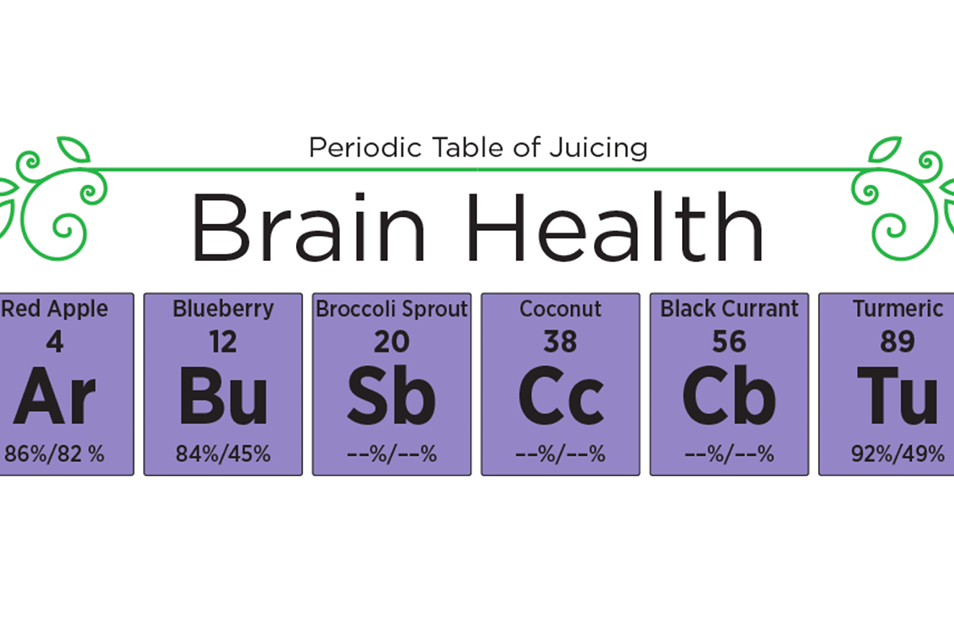
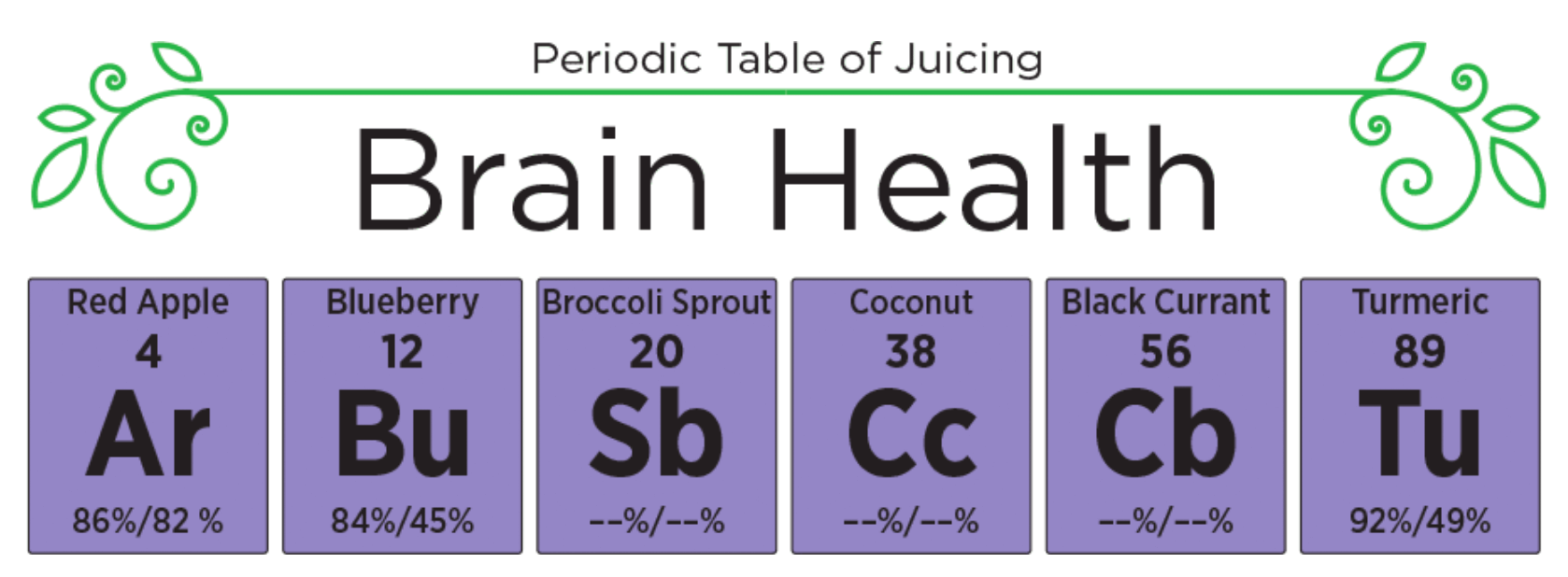


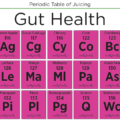
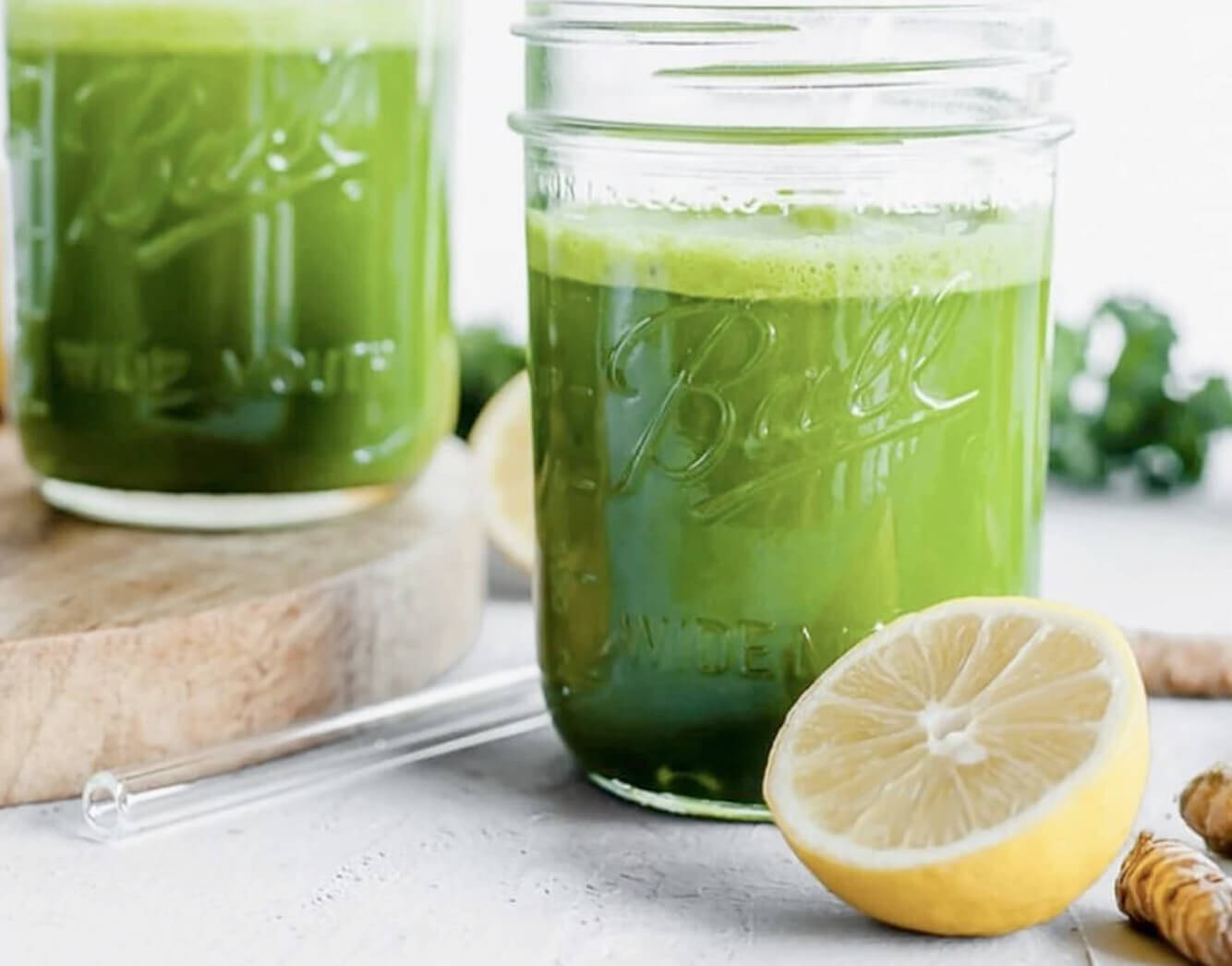
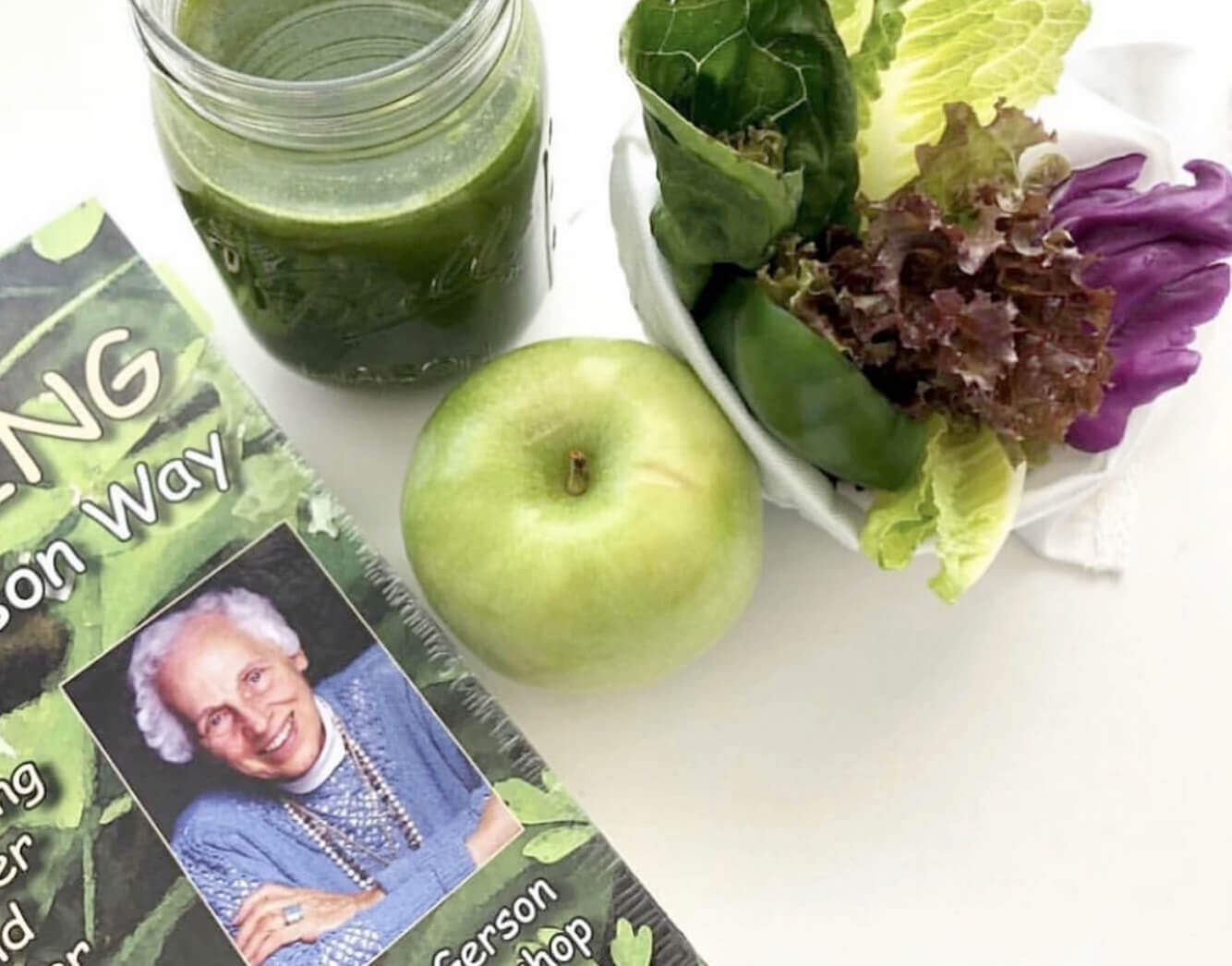







Chris says:
How many glasses of juice do you recommend to drink per day or week for a healthy person?
PURE Juicer says:
Dr. Ilene Ruhoy, @juicingneurologist drinks 1 liter of juice per day (that is about 32-34 oz.). But any juice is better than no juice!